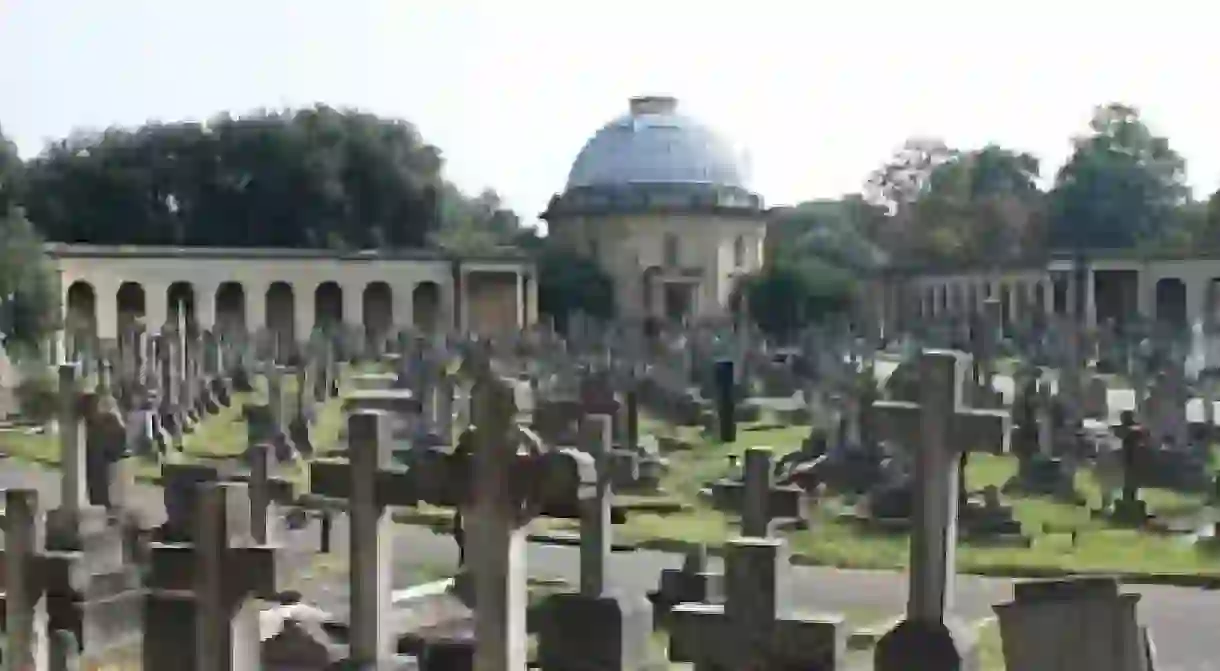Erie & Historical Cemeteries to Visit in London

London’s graveyards and their classic gothic charm have been featured in literary, film, and actual legend for centuries. Fascinating, poignant, and sometimes eerie, here are the top eight cemeteries to visit.

Kensal Green
Cemetery

West Norwood
Cemetery

Bunhill Fields
Cemetery, Park

Abney Park
Cemetery, Park

Brompton Cemetery
Building, Cemetery, Cathedral

Highgate Cemetery
Cemetery, Memorial

Established in 1839, Highgate Cemetery is the resting place of many famous people throughout history and is easily the most famous cemetery in London. Most visited is the monument dedicated to Karl Marx, featuring a bust of the formidable socialist erected in 1956 by left-wing sculptor Laurence Bradshaw. Also worth seeing is the self-designed memorial of pop-artist Patrick Caulfield. Other people buried here include The Hitchhiker’s Guide to the Galaxy author Douglas Adams, poet Christina Rossetti, Victorian writer George Eliot, the wife and children of Charles Dickens, and Elizabeth Siddal, wife and muse of Dante Gabriel Rossetti, who secretly re-opened her grave seven years after her death to retrieve a book of poems he had placed in her coffin.
Nunhead Cemetery
Cemetery

Sephardi Velho and Nuevo Jewish Cemetery
Cemetery, University













